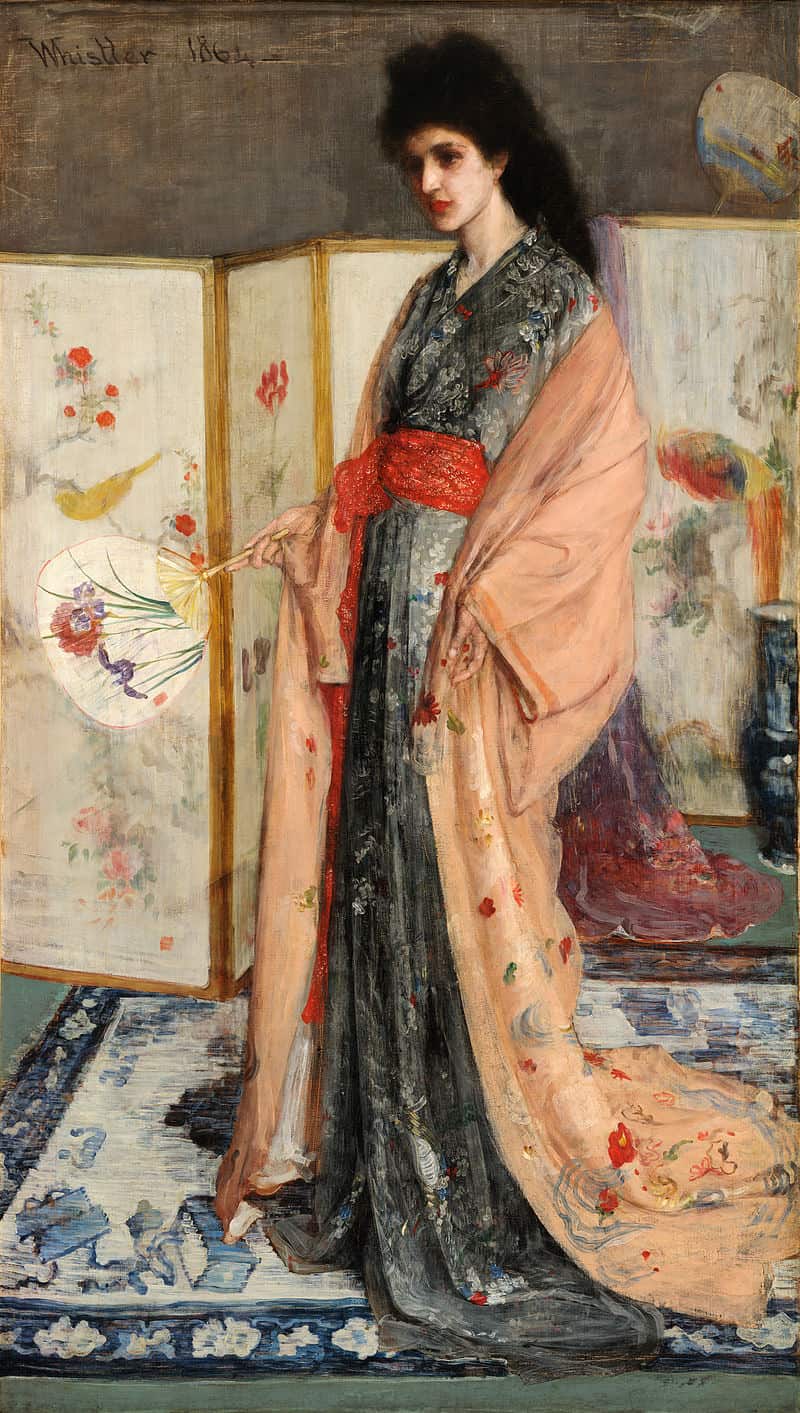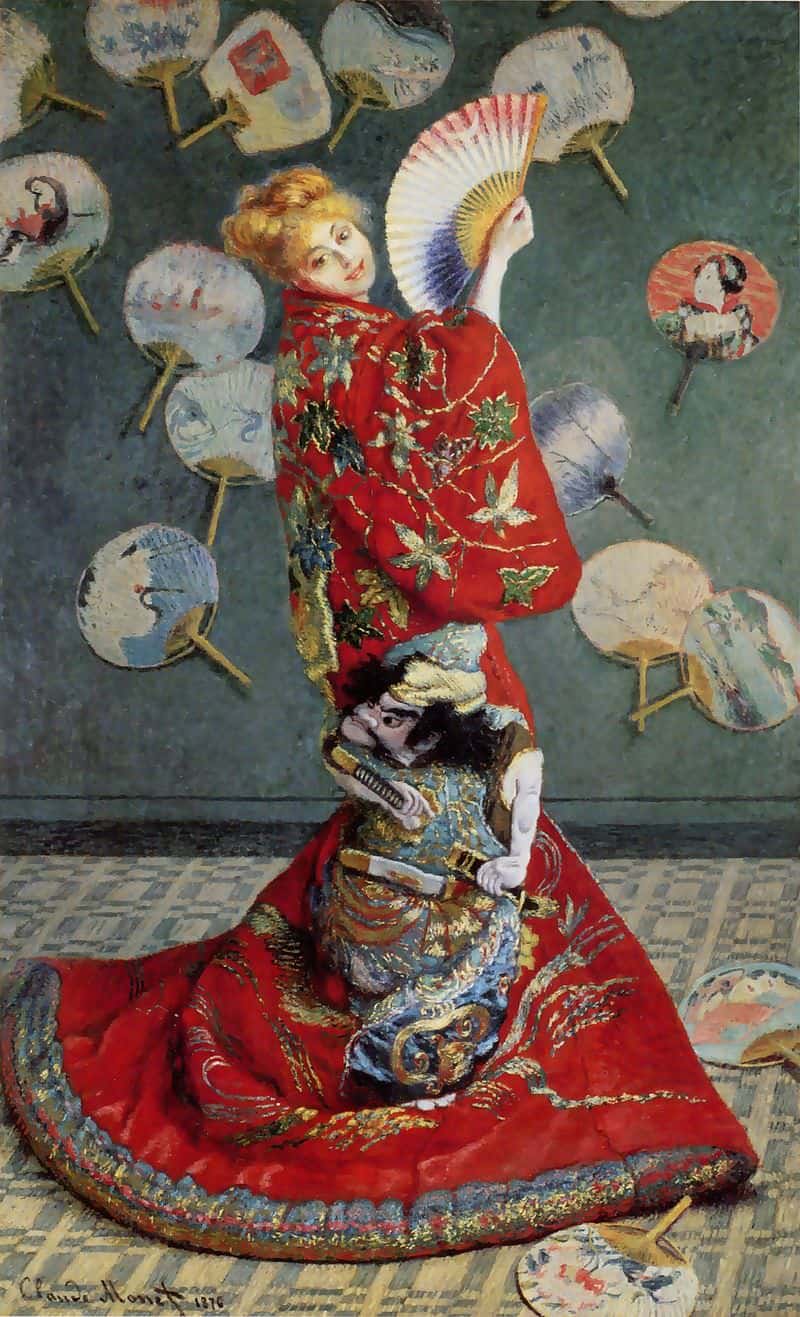If Claude Monet ever imagined that his 1876 painting “La Japonaise” (his wife Camille in a “Kimono”) would be called racist, he and his fellow painters influenced by Japanese art and culture would be flabbergasted. To make a small correction, the painter’s wife is dressed in an “irouchikake (打掛)”, a gorgeously embroidered and very heavy piece of clothing worn at a bride’s wedding reception.

The BMFA is featuring this painting, recently restored, and additionally has on hand similar Japanese “robes” for visitors to try on, to get the feel and weight of the garment. Some people have had their photograph taken in front of the painting while wearing the kimono. This was helped by volunteers who placed the irouchikake on those who wished to wear it. The irouchikake were commissioned by NHK, the Japanese broadcaster, as replicas of the garment in the painting for an exhibition held in Japan.
In the current exhibition, a small number of people protested with signs in the museum itself near the painting, saying that Monet was mocking Japan and Japanese culture. Further, they said, the wearing of the kimono by non Japanese or Caucasians was racist. Interestingly, from the photographs shown, none of the protestors were Japanese though there may have been some Japanese at other times.
This stance seems very odd. Nothing could be farther from the truth. It is unfortunate that those people protesting are apparently unaware of a recent exhibition at the Setagaya Museum of Art titled “Looking East: Western Artists and the Allure of Japan from the Boston Museum of Fine Arts.” In the exhibition in Japan were some of the Japanese works which inspired the Western artists’ works being shown.

There is an enormous amount of information available about Japonism and the interchanges which occurred after the forced opening of Japan in the 1850’s. The beginnings of international trade created across Europe an enthusiasm for fans, textiles, ceramics, ukiyo-e or woodblock prints, Japanese designs, all things Japanese. Works created using these objects for inspiration but made by artists in Europe and the U.S. resulted in the term “Japonism”.
After the opening of Japan to foreigners, travelers to the “exotic” East collected many categories of items. It is thanks to those intrepid travelers that the Boston Museum of Fine Arts has what is considered the finest collection of woodblock prints (木版画, moku hanga) outside of Japan (and perhaps within). Brothers William S. and John T. Spaulding donated their renowned collection of over six thousand fine Japanese prints to the Museum of Fine Arts. Edward Sylvester Morse, Ernest Francisco Fenollosa, William Sturgis Bigelow and Okakura Kakuzō (also known as Okakura Tenshin), besides being donators to the museum of Japanese art, held other roles of importance. Morse, Fenellosa, and Okakura Tenshin were BMFA Curators. Bigelow was a BMFA trustee. Some resided in Japan for long periods of time, others traveled as visitors.
The Peabody Essex Museum in Salem, the Isabella Stewart Gardner Museum, among many others across the country, have and display many works from Japan. While most collections in museums are kept in cared for storage since they could not possibly exhibit all in the permanent collections, the museums also organize themed exhibitions which sometimes travel. Two masterful large exhibitions at the Boston Museum of Fine Arts currently are “Hokusai” and “In the Wake, Japanese Photographers Respond to 3/11“.
While the BMFA first issued a statement to explain their reasons for Kimono Wednesdays and said that it would remain, a small number of repeat protestors made visiting the museum uncomfortable for some. Thus, alas, no more kimono wearing. That being said, criticism, often highly negative criticism, can get people to attend an exhibition to see what all the fuss is about. If that happens with this exhibition, so much the better. Get the conversation started. What do you think?
